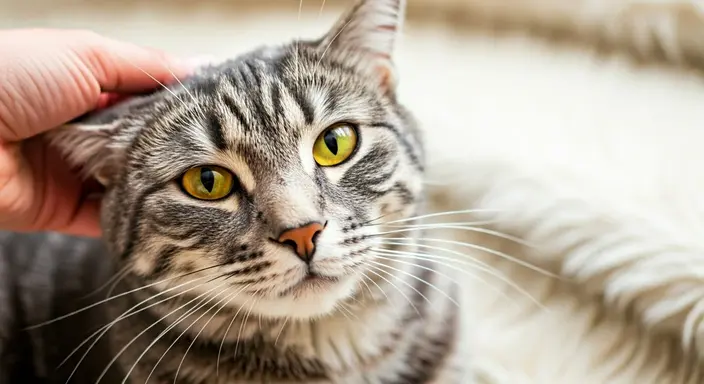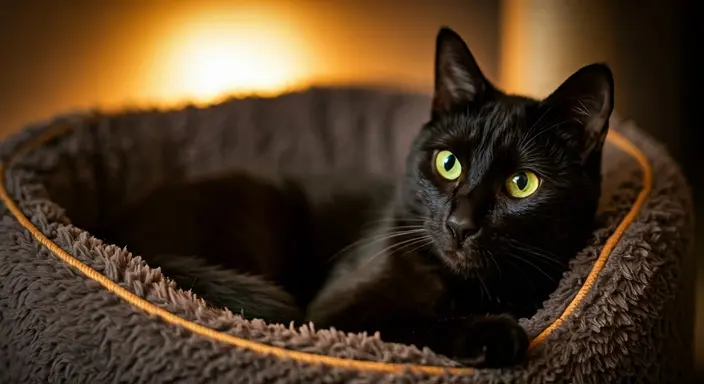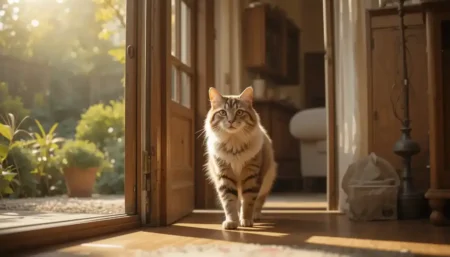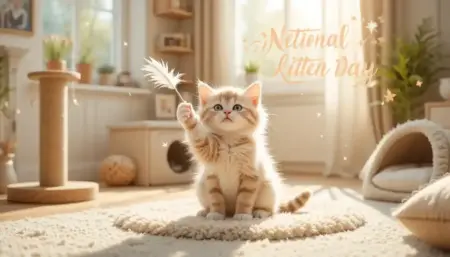Petting a cat isn’t just a feel‑good activity—it’s a two‑way conversation that reveals a wealth of cat behavior clues. By learning where, how, and when to touch, you can read body language, reduce stress, and deepen trust in just a few minutes a day.
Below you’ll discover the science, signals, and step‑by‑step tactics that turn casual strokes into purposeful bonding.
Understanding Cat Behavior Basics
A solid grasp of cat behavior sets the stage for all other interactions. Cats communicate primarily through posture, tail movement, ear position, and vocalizations. Recognizing these signals helps you decide when a petting session is welcome and when it should pause.
Body Language Overview
| Signal | Typical Meaning | How to Respond |
|---|---|---|
| Slow blink | Trust and affection | Return the blink; a silent “I love you.” |
| Tail upright with a tip curl | Friendly greeting | Offer gentle petting; the cat is open. |
| Ears forward | alert, curious | Approach slowly, let the cat lead. |
| Puffed tail | Fear or aggression | Give space; avoid petting until calm. |
| Mid‑air swat | Overstimulation | Stop touching immediately, redirect focus. |
Vocal Cues
- Purr: Often content, but can also mask pain; check context.
- Chirrup/Trill: Excitement and invitation to interact.
- Hiss or growl: Clear sign of discomfort; stop petting.
Why Body Language Matters
- Predicts reactions: Allows you to prevent bites or scratches.
- Builds trust: Responding appropriately reinforces positive associations.
- Improves health: Stress‑free cats have stronger immune systems.
Understanding these basics creates the foundation for purposeful petting and enhances overall cat behavior knowledge.

How Petting Influences Cat Behavior
Touch is a powerful modulator of feline physiology. When done correctly, petting releases endorphins, lowers cortisol (the stress hormone), and triggers scent‑marking behaviors that reinforce the human‑cat bond.
The Science Behind the Stroke
- Pressure receptors in the skin send calming signals to the brain’s limbic system.
- Cheek and chin glands release pheromones as you stroke, signaling “this is safe.”
- Vagus nerve activation slows heart rate, creating a relaxed state.
Safe vs. Sensitive Zones
| Safe Zone (Gentle petting) | Sensitive Zone (Avoid) |
|---|---|
| Back between the shoulder blades | Base of tail |
| Chin and jawline | Belly (unless cat shows invitation) |
| Back between shoulder blades | Lower back, near hindquarters |
| Top of the head (light) | Paws and legs |
How to Use Petting to Shape Desired Cat Behavior
- Reinforce calmness: After a short stroke, reward with a treat if the cat remains relaxed.
- Redirect overstimulation: Observe tail flicks; pause petting before the cat reaches a “too much” threshold.
- Encourage socialization: Combine petting with gentle voice tones to associate your presence with safety.
By leveraging these physiological effects, you can guide cat behavior toward greater sociability and reduced anxiety.
Reading Cat Behavior While Petting
Even seasoned owners can miss subtle signs. Below are the most common cat behavior cues you’ll see during a petting session, paired with quick actions you can take.
Positive Signals
- Slow, rhythmic purring – Keep petting; the cat is content.
- Kneading paws – Often a sign of comfort; consider a soft blanket beneath you.
- Head‑butt (bunting) – The cat is marking you with scent; give a gentle scratch behind the ears.
Neutral Signals
- Tail twitching side‑to‑side – Indicates mild arousal; reduce pressure or change location.
- Ear flicks – The cat is processing sounds; keep ambient noise low.
Negative Signals
| Cue | Interpretation | Immediate Action |
|---|---|---|
| Rapid tail lashing | Irritation or overstimulation | Stop petting, give space |
| Pupil dilation | Fear/alertness, especially if combined with flattened ears | Calm voice, retreat a few inches |
| Growl or low hiss | Clear warning | Cease contact, let cat retreat |
Learning to pause at the first hint of discomfort prevents escalation and teaches the cat that you respect its boundaries—essential for healthy cat behavior.

Signs of Discomfort in Cat Behavior
Every cat has a personal “tolerance meter.” When that meter is exceeded, the cat will display warning signs. Recognizing them early allows you to adjust the interaction before aggression occurs.
The “Overstimulation” Spectrum
- Early Stage – Tail tip flick – Light warning; pause briefly.
- Mid Stage – Swatting with claws sheathed – Stronger displeasure; stop petting and redirect.
- Late Stage – Full‑blown bite or aggressive swat – The cat’s limit is reached; give it space for several minutes.
Additional Red Flags
- Flattened ears against the head – Cat feels threatened.
- Whipping of the whole tail – Indicates high arousal; back off.
- Rising hackles on the back – Sign of fear; stop all contact.
How to De‑Escalate
- Give the cat a “time‑out” area (a quiet room or cat tree).
- Speak softly and avoid direct eye contact, which can seem confrontational.
- Offer a treat after a brief break to rewrite the association with you as a source of calm.
Understanding these negative cues preserves the trust you’ve built and prevents the development of fearful or aggressive cat behavior patterns.
Building Trust with Purposeful Petting to Shape Cat Behavior
Trust isn’t granted instantly; it’s earned through predictable, respectful touch. Below is a step‑by‑step program you can follow over a few weeks to turn casual strokes into a strong, trusting bond.
Phase 1 – Observation (Days 1‑3)
- Sit quietly near the cat’s favorite spot.
- Watch for natural approaches (e.g., rubbing against your legs).
- Log body language in a notebook: tail position, ear orientation, vocalizations.
Phase 2 – Initiated Short Touches (Days 4‑7)
- Approach from the side, not head‑on.
- Offer a fingertip to the cat’s nose; if it sniffs, proceed.
- Pet for 3‑5 seconds on a safe zone (chin or behind ears).
- Reward with a treat immediately after the cat remains calm.
Phase 3 – Gradual Extension (Weeks 2‑3)
- Increase petting duration by 5‑second increments each session.
- Introduce new locations (back between the shoulder blades, top of the head).
- Continue treat reinforcement for relaxed posture and slow blinking.
Phase 4 – Maintenance (Beyond Week 3)
- Keep sessions under 2 minutes unless the cat actively seeks more.
- Alternate petting with play (feather wand, laser pointer) to keep the interaction enjoyable.
- Conduct a weekly “trust check”: note any new sensitivities and adjust accordingly.
Following this structured approach reshapes cat behavior toward confidence and affection, while ensuring the cat never feels forced.
Enriching the Environment for Positive Cat Behavior
A stimulating environment reduces boredom, curtails unwanted behavior, and complements purposeful petting. When a cat’s needs are met, it’s more likely to display relaxed cat behavior during interactions.
Essential Enrichment Items
| Category | Example | Benefit |
|---|---|---|
| Vertical Space | Cat tree, wall‑mounted shelves | Allows safe observation points; reduces territorial stress. |
| Interactive Toys | Feather wands, motorized mice | Channels predatory instincts, burns excess energy. |
| Scratching Posts | Sisal, carpet, corrugated cardboard | Protects furniture; marks territory healthily. |
| Puzzle Feeders | Treat‑dispensing balls | Provides mental stimulation, slows eating. |
| Scent Enrichment | Catnip, silvervine, herbal sprays | Encourages play, reduces anxiety. |
Rotation Schedule
- Weekly: Swap toys or rotate locations of scratching posts.
- Monthly: Introduce a new scent or replace a worn-out toy.
Changing the environment prevents cat behavior from becoming stagnant, encourages exploration, and makes petting sessions feel like a reward rather than a routine chore.

Health Insights Hidden in Cat Behavior
Cats are masters at hiding illness, but subtle cat behavior shifts often provide the first clues. Observing these changes can lead to early veterinary intervention.
Key Behavioral Health Indicators
| Behavior Change | Possible Health Issue | Action |
|---|---|---|
| Decreased grooming (matting, greasy coat) | Dental disease, pain, arthritis | Schedule a dental exam; check joints. |
| Increased vocalization at night | Hyperthyroidism, cognitive decline | Blood work; discuss senior care options. |
| Sudden aggression or hiding | Urinary tract infection, pain | Vet visit for urinalysis; pain assessment. |
| Excessive licking of a specific area | Skin infection, allergy, wound | Inspect skin; consult vet for treatment. |
| Weight loss despite normal appetite | Diabetes, gastrointestinal issues | Blood glucose test; abdominal imaging. |
Routine Observation Checklist
- Morning: Check litter box output and water consumption.
- Midday: Note activity level during play or petting.
- Evening: Observe grooming and social interaction.
Maintaining a simple behavior log helps you spot trends early, turning everyday cat behavior into a practical health monitoring tool.
Training Cats: Applying Cat Behavior Principles
Training isn’t exclusive to dogs; cats learn best when training respects their natural cat behavior patterns. Positive reinforcement, timing, and low‑stress environments are essential.
Clicker Training Basics
- Introduce the clicker with a high‑value treat (chicken, tuna).
- Pair the click with the treat—repeat until the cat associates the sound with reward.
- Mark desired behavior (e.g., sitting, coming when called) with a click, then gave a treat.
Lure‑Reward Method
- Lure: Use a treat to guide the cat into the desired position.
- Reward: Immediately give the treat once the cat holds the position for a second.
Shaping Complex Behaviors
- Break the target behavior into small steps.
- Reward each incremental success, gradually increasing the criteria.
Common Training Goals
| Goal | How Cat Behavior Helps | Example Cue |
|---|---|---|
| Come When Called | Place a post near furniture, reward use | “Here, kitty!” + click |
| Use Scratching Post | Redirect natural clawing instinct | Place post near furniture, reward use |
| Stay Off Counter | Leverage aversion to texture | Mat with double‑sided tape, reward floor stay |
By aligning training methods with innate cat behavior, you increase success rates and keep sessions enjoyable for both parties.
Myths About Cat Behavior That Mislead Owners
Misinformation spreads quickly online, often causing unnecessary stress for cats and owners alike. Below are the most common myths, the truth behind them, and how the myth affects cat behavior.
- Myth: Cats are completely independent and don’t need affection.
Truth: While cats value autonomy, most crave social interaction. Ignoring this can lead to withdrawal or anxiety. - Myth: A cat’s purr always means it’s happy.
Truth: Cats also purr when in pain or stressed as a self‑soothing mechanism. Context matters. - Myth: All cats hate water.
Truth: Some breeds (e.g., Turkish Van) enjoy water. Exposure to gentle, lukewarm baths early on can normalize it. - Myth: If a cat scratches, it’s being aggressive.
Truth: Scratching is a natural behavior for marking territory and stretching. Providing appropriate posts redirects this cat’s behavior. - Myth: Cats will “outgrow” destructive behavior as they age.
Truth: Boredom, stress, or medical issues can trigger renewed destructive cat behavior at any age. Enrichment and health checks stay vital.
Debunking these myths helps owners respond appropriately, fostering healthier cat behavior in the long term.
Everyday Tips for Positive Cat Behavior Interactions
Small, consistent practices make a big difference. Incorporate these habits into your daily routine to reinforce calm, confident cat behavior.
- Keep a predictable schedule for feeding, play, and grooming. Cats thrive on routine.
- Use a soft, calm voice when you approach; high‑pitch tones can be perceived as threatening.
- Offer “choice” during petting (e.g., let the cat walk away) to empower the animal.
- Trim nails regularly to reduce the severity of accidental scratches.
- Provide a “retreat” space (covered cat bed or box) that’s always accessible.
- Rotate toys weekly to keep curiosity alive and prevent boredom‑driven aggression.
- Never punish a cat for unwanted behavior; it damages trust and can worsen the cat’s behavior.
- Observe litter box habits; changes can indicate stress or health concerns.
Applying these practical tips daily creates a nurturing environment, encouraging your cat to display its best cat behavior traits.
FAQs
How do I know if my cat enjoys being petted?
Look for slow blinking, soft purring, and a relaxed body. If the cat leans into you, nudges your hand, or offers a head‑butt, it’s a clear sign they love the contact.
Can I train a cat to tolerate a calm petting session if it’s usually skittish?
Yes. Start with very short, gentle strokes on a safe zone and reward calmness with treats. Gradually increase duration while monitoring stress signals; consistency will build confidence over weeks.
Why does my cat sometimes purr loudly while also hissing?
Cats can experience mixed emotions. The purr may be self‑soothing, while the hiss signals fear or discomfort. Look at body posture—if ears are flattened or tail is puffed, the cat is not content.
Is it safe to let my cat sit on my lap while I work on the computer?
Generally, yes, as long as the cat is calm and you provide a stable surface. Keep cords out of reach to prevent chewing, and watch for sudden tail flicks that indicate overstimulation.
How often should I change my cat’s toys to keep them engaged?
A good rule is to rotate toys every 7‑10 days. Introducing a “new” toy from a hidden stash re‑stimulates hunting instincts and reduces boredom‑related cat behavior issues.
Conclusion
Understanding cat behavior transforms a simple petting session into a purposeful exchange that builds trust, reduces stress, and promotes overall health.
By mastering body‑language cues, using targeted touch zones, and reinforcing calmness with positive rewards, you create a predictable, respectful routine that cats love.
Pair these techniques with enrichment, regular health checks, and gentle training, and you’ll watch your feline companion flourish—purring, head‑butting, and seeking you out for more purposeful cuddles.
Actionable tip: Start tomorrow by observing your cat for five minutes, note one positive cue (like a slow blink), and reward that moment with a brief, gentle chin pet and a favorite treat. Repeat daily, and you’ll quickly unlock the secret language of your cat’s behavior.









